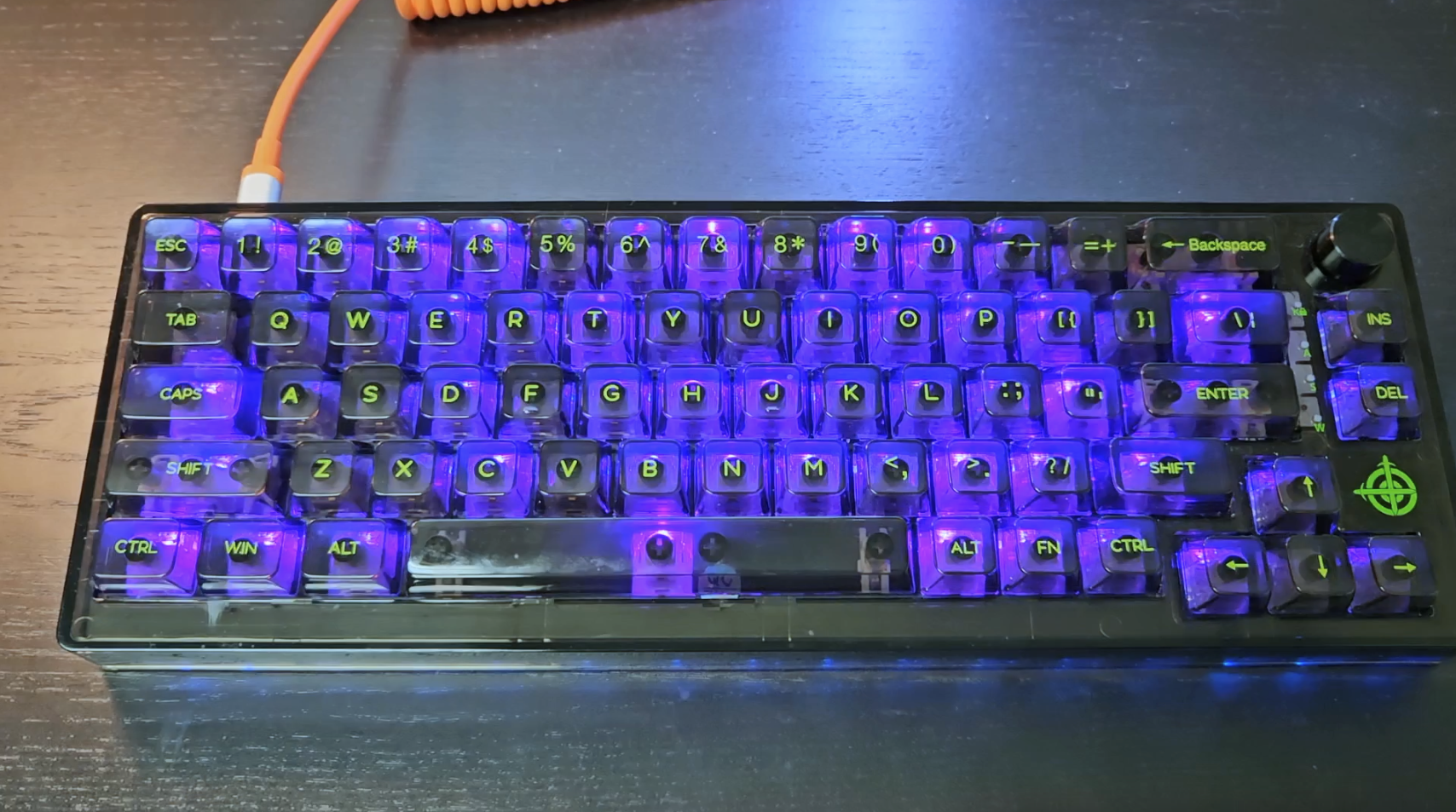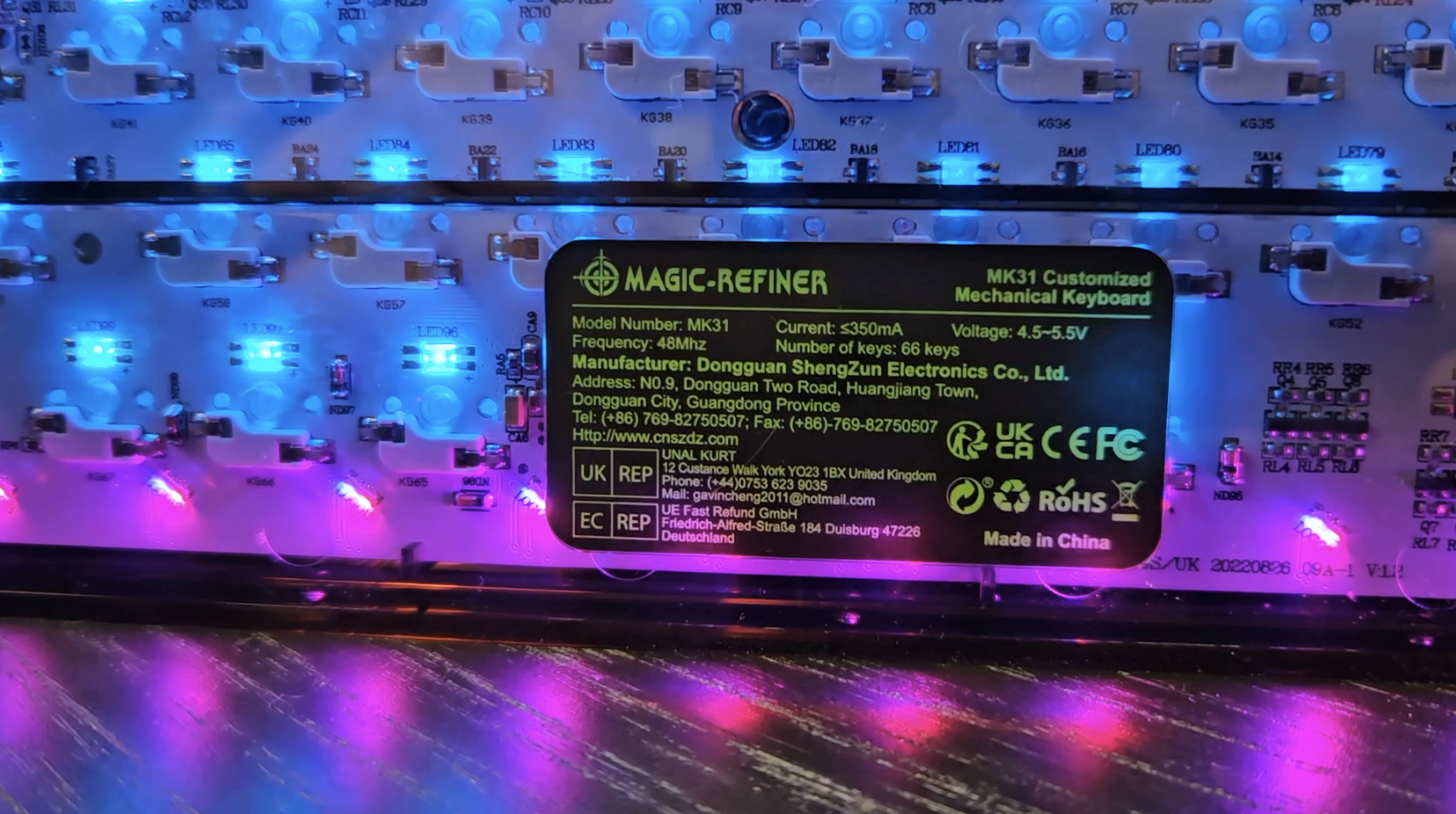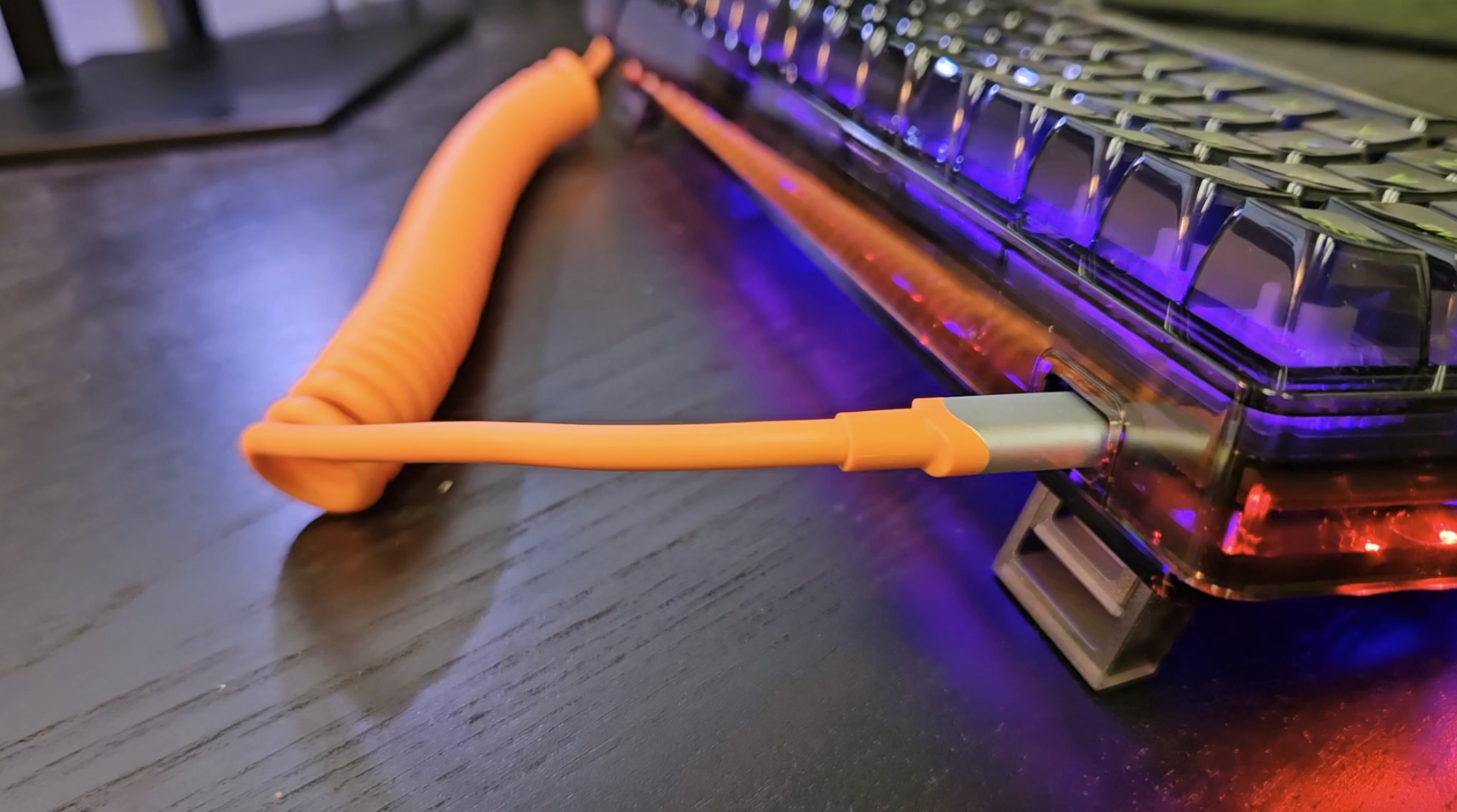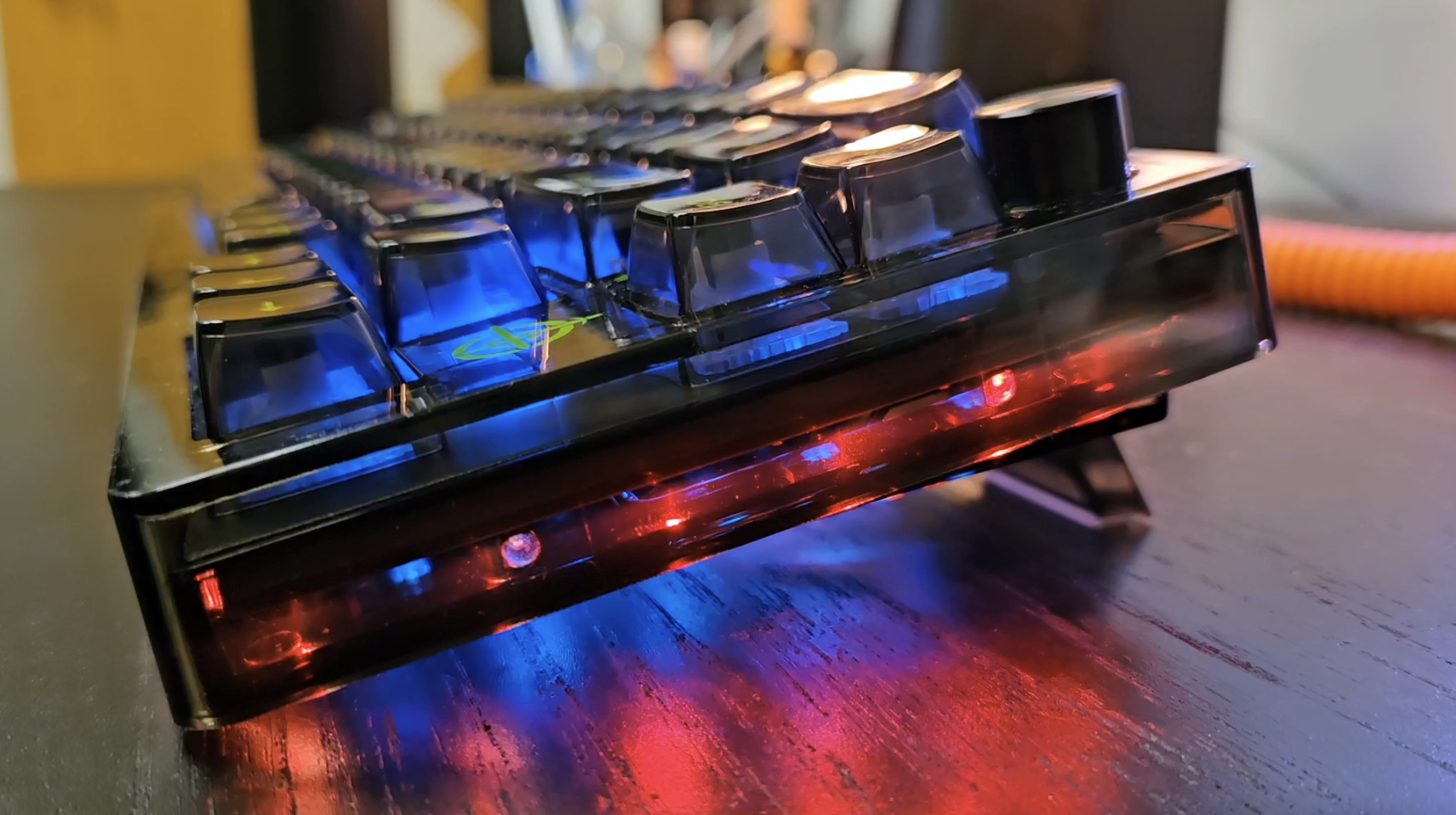Magic Refiner MK31 Mechanical Keyboard Review: Must Be Magic To Be So Affordable!
Purchase Price: $69.99
We are a participant in the Amazon Services LLC Associates Program, an affiliate advertising program designed to provide a means for us to earn fees and support our channel by linking to Amazon.com and affiliated sites.
You don’t really need to spend $100+ to get a serviceable mechanical keyboard in this day and age. This particular one I picked up earlier this year is a 65% hot-swappable wired keyboard that I believe is called the MK31 from a Chinese company. I’ll refer to this as the Magic Refiner because that’s what the box has plastered over it. Regardless of what the official name and who makes this keyboard is, I have to say that I’ve thoroughly enjoyed having this as my work keyboard over the last few months and am pleasantly surprised at how much enjoyment I got out of it for what I paid.
Clearly Translucent
The RGB looks awesome through the clear keycaps
The thing that makes this keyboard attractive is the translucent body. It’s a popular trend in the mechanical keyboard market right now, but this board makes it look much cooler than it should be when considering that this is being sold in the budget sector. There is absolutely no contrast at all with the design and color scheme of the Magic Refiner. The frame, the keycaps, the body, and even the feet are all transparent by design. This uniformed appearance is refreshing to look at on a desk. I purchased the black model and I do find the clear keycaps to give off an amazing aura when paired with the RGB colors and patterns. While the RGB colors and patterns are pretty generic to what we’ve been accustomed to seeing in modern gaming keyboards, the translucent look elevates every aspect of the colors. It’s easy to read the keycap letters in the dark due to the way the RGB beams through the keycaps. I also like the yellow-green lettering that matches the two sword bullseye logo in color. It’s a very clean look.
There are 66 keys on this 65% mechanical keyboard. It gets to this number by including an Insert and Delete key underneath the volume knob. They’re spaced apart from the main keys relatively comfortably to keep the board from feeling cluttered. Directional keys are also provided on the MK31, making the board quite decent to operate in the functionality category. Speaking of the volume knob, I like the contrast in material used. It’s not smooth plastic like the rest of the keyboard. The dial is made of a cool chamfered aluminum that feels good to touch and click into. I’ve never used Linear Ice White switches before, but they sound similar to Gateron switches on other keyboards I’ve owned. If the default configuration doesn’t feel or sound to your liking, this board does offer hot swapping for 3 and 5 pin switches from a variety of compatible products.
Typing Experience
I did find typing on the MK31 to be pretty enjoyable overall. It’s non-intrusive enough to be an office keyboard, but unique enough to be a gaming keyboard. Input onto the keys are often smooth and soft to press into. My fingers would glide from key to key effortlessly. There’s not a whole lot of feedback from the combination of these switches and these crystal caps. Honestly, it feels like I’m pushing into a Squishmellow sometimes. That’s not a bad thing in my opinion. I felt extremely relaxed and comfortable typing on this. That’s a bit surprising because I do tend to prefer keyboards with a lot more resistance when inputting strokes.
There are three angles that the MK31 can attain. Two of them can be propped up through adjustable feet on the rear panel. Even the flat on-desk position is relatively comfortable to type on due to the bulk of the board being elevated further away from your body.
In terms of how these default custom switches sound, I would say it fits in pretty nicely as a versatile gaming or work board. The sound emitting from input isn’t so obnoxious that it would be disturbing in an office setting. In fact, I exclusively used it as my work keyboard for a few months. However, due to it’s gaming aesthetic, the clanky nature of the sound fits in with that direction as well.
Keep it Clean
While I’ve been a fan of the translucent keycaps and the overall aesthetics of the MK31, this material does lead to some unruly results due to the grimey fingerprints and dust that get attracted to this board. If you want to keep a clean appearance, you’ll be wiping and dusting off the MK31 frequently. This is especially true if you own the black color like I have. This is about as glossy of a surface as you can find. I also do have some concerns about the build quality. The plastic has held up so far, but I do worry that it may crack on a bump or drop.





Pleasant Surprise
One pleasant surprise that came with the box was an included aviator coiled cable. It’s not the highest quality out there, but for many people purchasing this keyboard, I surmise it will be their first one. The orange color is an interesting combination choice for the black body as it doesn’t necessarily pair with the green keycap letters, nor does it match with any of the preset RGB colors. However, since it is a USB-C cable, you could use this with another keyboard later down the line that has a USB-C port that might match the color scheme better. All in all, it’s a nice surprise to have any aviator cable included with such an affordable purchase.
Final Thoughts
There’s a lot to like about the MK31 that I think represents where the mechanical keyboard industry is currently at. This is by many metrics a terrific mechanical keyboard that offers just about all the amenities that a gaming board should have. There are plenty of people out there where a 65% mechanical keyboard like this is all the keyboard they would need to handle their needs. Ultimately, I would highly recommend the Magic Refiner MK31 for not only newcomers to the mechanical keyboard market, but also keyboard enthusiasts who enjoy seeing how much keyboard they can get for their money. There’s terrific value here.












Alex
With nearly a decade under his belt running his video production team, and countless hours traveling the country to report on pop culture events during his tenure as a contributor for AXS Examiner, Alex has relied on a lot of gadgets over the years. That still hasn’t satiated his need to get his hands on the newest and greatest the world has to offer!